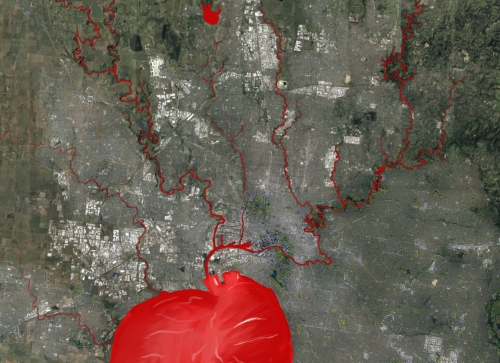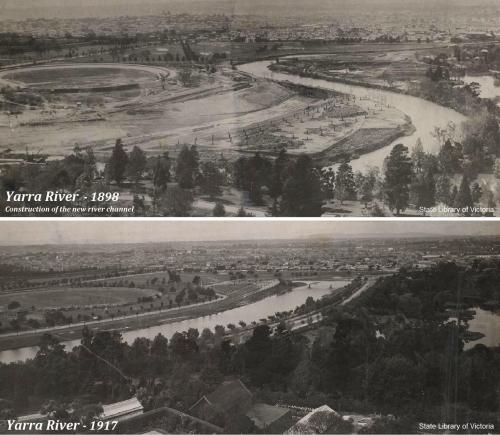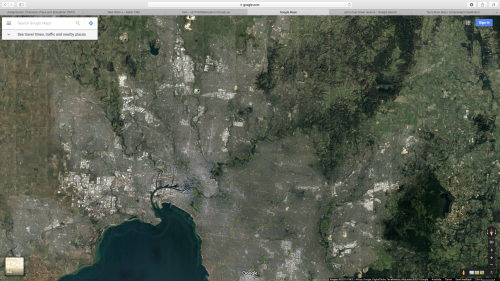
SCROLL TO BOTTOM FOR REFLECTIONS
Context:
I am fascinated by places that hold inherently attractive properties for people throughout time and across cultures, and significance to their development. Humanity is eternally intertwined with our environment, regardless of whether we are aware of it or not. Fewer are more intimately connected than the indigenous people of Australia and more specifically for my inquiry, the Wurundjeri people of the Kulin nation. For example, Jefa Greenaway has highlighted the current locale of the MCG as a historically significant Kulin Nation Gathering Place. Now it is still being used as a gathering place of sorts, and still holds cultural significance as a congregation point. Does this parallel exist because they were made more desirable as areas to build upon because of physical/geographical remnants of their use (cleared or level ground)? Is this because they have some sort of objective pull or power? Is this because of their location relative to some other place of significance?
One consistent in these places of significance seems to be water. Water is a provider of life and sustenance, a means of swift travel and transport of goods, and a natural convergence point. The Kulin Nation Gathering Place (MCG) is located right by a waterway which connects a vast area of land across the Kulin nation, which may have been instrumental in its selection.
This consideration of water lead me to more closely examine the Yarra River itself. The Yarra was the lifeblood of the Wurundjeri people for hundreds of thousands of years, and was sustainably managed throughout that time. In contrast, between the combined effort of settlers discarding sewage, rubbish and general waste into the river, and the development of Industry in areas such as Fitzroy and Collingwood and Richmond, it took only 20 years of settlement for the Yarra to be declared undrinkable (Yarra River Melbourne, 2019).
Also see:
Malpas, J. (2018). Place and Experience. London: Routledge, https://doi.org/10.4324/9781315265445
https://www.openhousemelbourne.org/event/sites-of-indigenous-significance-in-kulin-melbourne-a-walking-tour/
https://aboriginalhistoryofyarra.com.au/11-pollution/
Method:
I will investigate the parallels between water and life by rendering the Yarra River as an artery through which the land and people are supported.
Response:
See Image Below
Reflection for Folio:
I believe that our understanding of place is subject to change and evolution as the context in which we observe it changes. However, some aspects of place and its importance seem to persist over time and through culture. The initial focus for my work this week centres on sites of significance for First Nation Kulin peoples that are still being used for similar purposes today, albeit by white settlers and their descendants. I looked specifically at the MCG, which was a major Kulin Nation gathering place, and is still today used for gatherings of a sort. After some consideration on why this might be the case, I stumbled across the history of the Yarra River. The Yarra was central to the lifestyle and survival of the Kulin peoples, providing sustenance and a mode of transportation. It was again used prolifically by the European settlers, but with vastly different regard.
This concept diverged into a reflection upon the mindsets of different societies and cultures toward resources and place. Though I am still interested in the persistence of ideas of place over time, I felt much more emotionally stimulated by a reflection upon differing cultural response to that place.
Here, my reverent appreciation of the natural world becomes more apparent. Up until this point in the semester, I have been largely reflecting upon the constructed world in an attempt to find beauty. In this activity, I had opportunity to reflect upon the cost that this development has had upon our environment. I have not yet concluded what significance this activity has had to my overall project development, though it was sobering and instructive.
About This Work
By Evan McInnes
Email Evan McInnes
Published On: 27/03/2019


